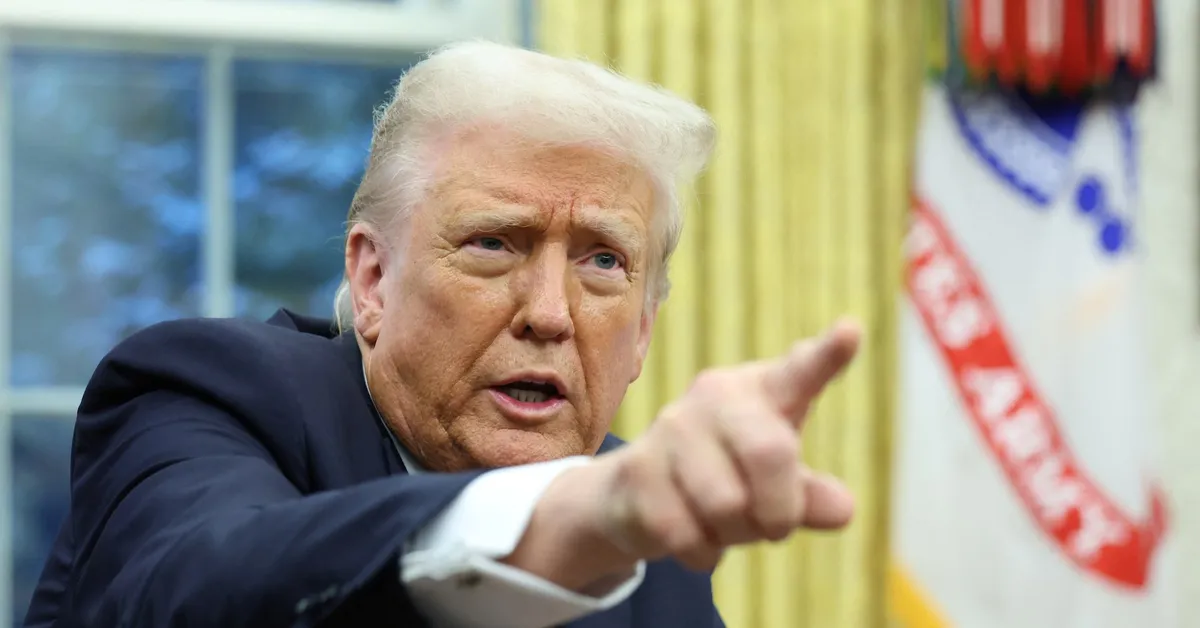
WASHINGTON, Feb 12 (Reuters) - In a move that has heightened concerns of a broader global trade war, Donald Trump's trade advisers are finalizing plans for the reciprocal tariffs promised by the U.S. president. These tariffs aim to target every country imposing duties on U.S. imports, further escalating international trade tensions.
On Monday, Trump surprised global markets by announcing new tariffs on all steel and aluminum imports, set to begin on March 12. This decision has faced criticism from key allies, including Mexico, Canada, and the European Union. Meanwhile, Japan and Australia are actively seeking exemptions from these duties.
The announcement has caused significant disruption for industries heavily reliant on these imports, as they scramble to mitigate the anticipated increase in costs.
In addition to the metal tariffs, Trump has imposed an additional 10% tariff on Chinese goods, which took effect on February 4. In response, China has implemented countermeasures, further intensifying the trade conflict between the two nations.
Meanwhile, a proposed 25% tariff on goods from Mexico and Canada has been postponed until March 4 to allow for negotiations aimed at securing U.S. borders and addressing the flow of fentanyl.
While some U.S. workers have welcomed the metal tariffs, many manufacturing-heavy firms are concerned about the impact on supply chains. These firms warn that the tariff hike could have far-reaching consequences for businesses dependent on steel and aluminum materials.
White House officials have remained reticent about the details and timing of the next round of tariffs. A source has indicated that an announcement might be forthcoming later in the week.
Trump has indicated plans to announce reciprocal tariffs on countries imposing duties on U.S. goods, and is also considering separate tariffs on cars, semiconductors, and pharmaceuticals.
Trade experts note that implementing the reciprocal tariffs Trump envisions poses significant challenges. William Reinsch, a senior fellow at the Center for Strategic and International Studies, suggests the administration might opt for a flat tariff rate of 10% or 20%, although a more complex approach could be considered.
Damon Pike, a trade specialist with BDO International, highlights the monumental task of enacting reciprocal tariffs. With 186 members of the World Customs Organization, each having different duty rates, the administration faces a complex challenge akin to an artificial intelligence project.
Experts suggest that Trump could utilize several statutes, including Section 122 of the Trade Act of 1974 and Section 338 of the Tariff Act of 1930, though these have limitations. The International Emergency Economic Powers Act may also be a tool at Trump's disposal.
Reinsch warns that reciprocal tariffs could inadvertently give control of the U.S. tariff schedule to other countries, resulting in potentially counterproductive outcomes. For instance, imposing a high tariff on Colombian coffee to match Colombia's own tariffs could harm U.S. consumers, despite the U.S. not producing coffee.
As the situation develops, industries and international partners closely monitor these evolving trade policies.
Sign up here for updates.
Reporting by Andrea Shalal and David Lawder in Washington; Editing by Lincoln Feast